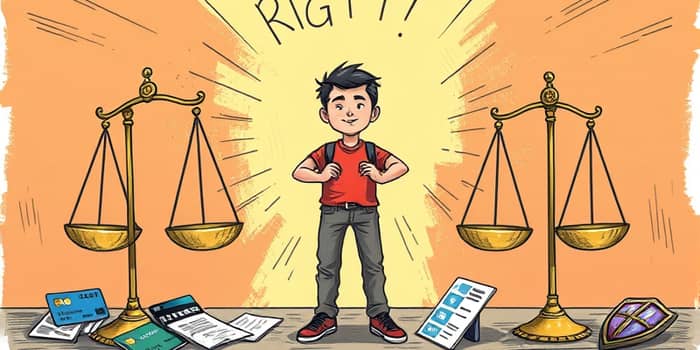
In an era where digital payments define commerce and convenience, the ability to contest a transaction is more critical than ever. From small online purchases to significant recurring charges, consumers and merchants alike must grasp the protections and responsibilities embedded in the chargeback process. This article delivers a comprehensive exploration of chargebacks, offering practical guidance for dispute resolution and deep insight into your legal rights and obligations. Whether you’ve encountered an unauthorized charge or seek to strengthen your business’s defenses, understanding this landscape empowers you to navigate conflicts effectively.
A chargeback represents a reversal of funds after a credit card transaction, initiated when a cardholder challenges a transaction with the issuing bank. Governed in the United States primarily by the Fair Credit Billing Act (FCBA), this process offers consumers legal protection against billing errors and caps liability for unauthorized charges at $50, provided the error is reported promptly. Card network regulations from Visa, Mastercard, and others establish reason codes and timelines, creating a structured pathway for resolving disputes. A clear grasp of these foundations anchors both consumer confidence and merchant preparedness.
Understanding each phase of the chargeback lifecycle can transform a daunting challenge into a manageable procedure. Below is a concise roadmap illuminating key stages, typical timeframes, and actionable insights for both parties involved.
Typically spanning sixty to ninety days overall, this journey evolves through investigative diligence and transparent dialogue. Early intervention by consumers can accelerate resolutions, while merchants benefit from maintaining robust records and responding promptly. Recognizing the weight of each step promotes fairness and minimizes prolonged uncertainty.
Chargebacks arise from diverse triggers, each reflecting unique circumstances. Identifying these root causes allows stakeholders to adopt targeted strategies for prevention and resolution.
Consumers possess powerful avenues for recourse when disputes arise. These rights ensure accountability, transparency, and equitable treatment throughout the process:
Merchants are equally empowered to defend against unwarranted claims and to uphold best practices. By understanding network guidelines and preserving clear documentation, businesses can protect revenue and reputation:
Proactive measures are the cornerstone of minimizing chargeback exposure. For consumers, regular statement reviews and direct communication with merchants can often resolve issues before formal disputes arise. Keep receipts, tracking numbers, and order confirmations at the ready to support any future claims.
Merchants should invest in secure payment gateways, fraud detection tools, and transparent billing descriptors. Ensure product descriptions are detailed and accurate. Monitoring dispute patterns reveals systemic vulnerabilities, allowing businesses to adjust policies or address operational bottlenecks ahead of time. These strategies foster trust and reduce the frequency of contentious transactions.
Chargebacks extend beyond individual transactions, influencing bottom lines and industry standards. Excessive dispute rates can damage a business’s reputation with processors, leading to elevated fees or account termination. Best practices dictate maintaining a chargeback ratio below 1% of total transactions to avoid penalties. Studies show that up to 80% of disputes in e-commerce stem from friendly fraud, underscoring the necessity for education and transparent communication between buyers and sellers.
Under the Fair Credit Billing Act of 1974, cardholders benefit from robust safeguards. The FCBA mandates timely notifications of investigation results and imposes liability limits for unauthorized charges—capping consumer exposure at $50 in most cases. Familiarity with these provisions empowers consumers to assert their rights confidently and ensures merchants uphold the highest standards of compliance.
When an issuer rules in favor of the consumer, the provisional credit becomes permanent, and losses are absorbed by the merchant. If evidence favors the merchant, any temporary credit is reversed, and the original charge stands. Rarely, disputes escalate to arbitration with card networks; these decisions are final and binding, providing closure for both parties and reinforcing the integrity of the payment ecosystem.
Maintaining open lines of communication throughout helps all parties reach mutually agreeable solutions before cases advance too far. Early settlement often preserves relationships and avoids the stress of protracted investigations.
The rapid expansion of mobile and digital wallet transactions has reshaped dispute dynamics, introducing new fraud vectors and challenges. In response, collaborative resolution tools have emerged, enabling real-time negotiation between consumers and merchants before formal chargebacks occur. This innovation can reduce friction and preserve goodwill.
Additionally, advanced analytics and machine learning empower businesses to predict dispute likelihood and implement targeted fraud prevention. As technology evolves, stakeholders who adapt will enjoy stronger defenses, streamlined processes, and more harmonious transaction experiences.
Ultimately, understanding the multifaceted world of chargebacks empowers you as a consumer or merchant. Armed with knowledge of your rights, responsibilities, and best practices, you can navigate disputes with confidence, protect your financial interests, and contribute to a fairer marketplace for all.
References













